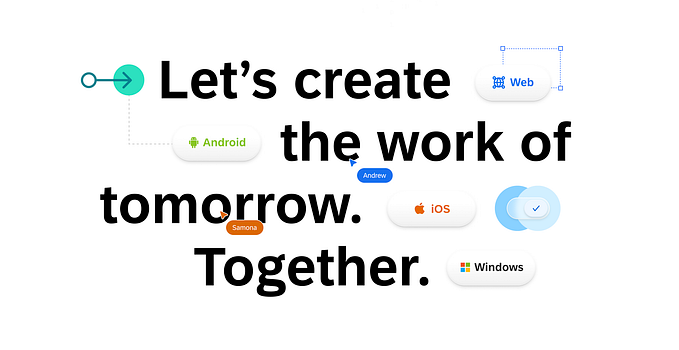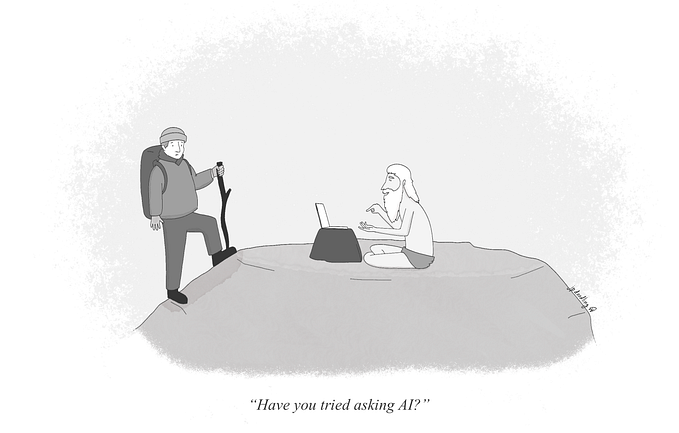
Best practices for ethnographic research, lessons learned in the wild
Planning is important but expect surprises. Embrace the unexpected and you will uncover insights. Your artifacts and your insights will guide you to create the best story.
What is Ethnography?
Ethnography is the study of a culture. In the professional world an ethnographic study involves interacting with someone in their environment to understand motivations, attitudes and behaviors. It can be referred to as observational research, immersion, in-homes, field work or contextual inquiry. Though there is debate about the differences in terminology or finer points of method, what I want to focus on are some best practices learned through experience. Typically what happens is a mix of observation and interview. You may have moments of true observation, you will encounter new artifacts, explore a new environment, and lead semi-structured interviews. Most importantly, you will have a rare opportunity to peek into someone else’s world. So whatever the challenges, whatever you call the method, all that is really important is what you are able to learn and the story you are able to share.
As a UX researcher, the best thing about ethnography is that you aren’t in the lab. You get to leave the known and learn new things about people, a place, a system, a company, a family. You do this by observing the environment, noting the artifacts, the tools and the processes. You start to learn the procedures, understand the task flow, see the interactions, understand the attitudes and motivations. And if you’re successful, you learn about the challenges, you uncover work-arounds and you are able to see, understand and document the unmet needs. My tips for success tend to focus heavily on preparation and planning and I’ve come to realize that there are always surprises, adaptability is crucial and sometimes the best stories come from the unexpected.
Plan ahead
First, clarify things with your stakeholder team and set expectations. You are going to see a few people to get a deep understanding of a domain and this may be different from the type of research your stakeholders are familiar with. How many people you see will depend on your scope but be clear about how much you can accomplish in one study. Establish your primary questions. You may be learning how children play with a toy, observing how people shop or watching how people use enterprise software, but either way, be sure to let your stakeholders know what you hope to learn from the observations so that there are reasonable expectations.
Your next step is setting expectations on the other end. This could be to a recruiter or to your contact person at a business place. Whether your research is taking place in a home, an office, a warehouse, a hospital or a school, try as hard as you can to get your recruiter or your business contact to understand what you want to do, why you want to do it and how you would like it to be done. For businesses, try to simplify the process and frame it in terms that are familiar to them. Provide them with an email template that they can share with others in the company who may want to participate. If you are going to a workplace to observe a process, get procedural documents in advance, or ask your contact to describe the task flow to you. Whether you are looking at a big process like warehouse distribution or a small process of how someone uses software to order supplies, a high level task flow is a great place to start.
On the other hand, if you are going into homes and only have contact with a recruiter, be sure to clearly spell out your expectations. Do you want the people to know which company you are working for? Which family members need to be present? We once recruited a family and got to the house to discover that the child wasn’t home. For this particular project the child's point of view was critical, so make sure and provide very clear expectations of where the interview will take place, who needs to be present, and the amount of time the visit will take.
The next step is preparation. In the ideal world you have a team of well trained ethnographers that you have prepared beforehand. You have a script guide for the facilitator, you have a trained note taker, a photographer and/or videographer. Everyone on your research team knows their role and everyone at the site is ready and willing to participate. In reality, you may be the only researcher. For safety and practical reasons you should always have at least one other person available to assist, for more on this see Nick Bowmast’s article on safety in numbers. If you are the primary researcher, make sure to record everything, remember pictures speak louder than words and video is a very powerful storytelling tool. Remember to focus on the key components: people, places, activities, conversations, attitudes and artifacts.
Expect surprises
Even with the best planning, there can be surprises on site. Here are a few situations I have experienced and yes, these things really happen:
So glad you’re here, we brought the whole team to the conference room for the ethnography.
Well, you can’t really observe naturalistic behaviors and workflows from a group in a conference room, can you? Don’t worry, if the whole team is in the conference room, this is your chance to explain why you are there and what you are hoping to do. Thank them for coming to meet you and tell them you look forward to working with them individually as they show you their jobs. Set up a quick schedule and let them know you are excited to work with each of them independently.
Oh, you need 1–1 time, I will bring the participants to the conference room one at a time.
If they are not allowed to show you their work area, adapt and do your best. You didn’t come for just interviews though, and you want to keep trying to get beyond the conference room, but if not maybe you can ask the participants to bring tools and examples to you. Be adaptable and learn as much as you can. Building trust can help get you better access to what you need in the future.
Meet Jim, he is the manager and will show you what the workers are supposed to do.
This can be valuable as long as you are also able to also talk to workers or observe the work in action. If you are there to learn about the role of the workers, comparing the manager’s vision of the workflow with what actually happens can lead to valuable insights. This may show that their perception is not at all in sync with the reality. Why is that? Is there an expected process and an actual process? This is the same on the consumer side. You may think you understand how people are using your products but then you get into the home and find something completely different. Surprise is good. Anytime you see an unexpected work flow, a workaround, an unexpected use case, it is time to figure out why. This is where the insights are found.

Embrace the unexpected
Sometimes you arrive and the participants have cleaned up for you and hidden away their messes. That is okay, but be observant. We once noticed a printer in the box under the bed at a participant’s home in China, then as we continued our in-home research visits, we noticed other printers in boxes also not being used. This was confusing to us because people had discussed printing pictures and documents. Remember-
What people do is a better indicator of the underlying user need than what people say. David Travis
The participants hadn’t put them away for us, they had put them away when they ran out of ink. We discovered that ink was too expensive, so even free printers weren’t being used.
You will have all types of participants, and some will take longer to warm up to you. Allow flexibility with your time to establish rapport, especially with international research. You may have to spend a lot more time than usual, so build that into your schedule. I mentioned people cleaning up for us but another unexpected surprise was that they almost all provided refreshments. Be conscious of the effort they have gone through, be appreciative, partake if you can and allow appropriate time to visit and relax. Sometimes insights occur organically outside of the expected interview.
Another unexpected challenge can occur with an overly helpful and friendly participant. Sometimes a very chatty participant will do more talking and less demonstrating. You can work with this. Point out things that they aren’t interacting with and ask, why? What is this for, when do you use that? Often you will be surprised by what you find or don’t find. Sometimes it will not go as planned but be flexible, make the most of what you can see and hear.
Flexibility also extends to interviews. If you are interviewing, and it goes off track a bit, sometimes that is okay and you may learn something you didn’t expect. Try not to focus too hard on an exact script. Whether you are in home or at work, ask people to show you what they do every day, what they do the most and what they do every once in a while. If they were demonstrating their normal tasks, they may not think to show you the infrequent uses. Sometimes the thing they do infrequently can be very important and may have important issues that need to be fixed. Also because you are limited in the number of people you can observe, look at both the novice and the expert. Notice the differences between someone new to the job/product/task vs. someone with experience.
Uncover Insights
After each ethnography session, immediately sit down for a mini brainstorm with your team and pull out the top findings. You think you will remember it all but you won’t. Discuss the best quotes, pictures, etc and mark them. Is there an insight? Make a note of it and see if it can be validated with subsequent participants. This makes it much easier when you return to your workplace and start to dive into the data.
Depending on the complexity and duration of your research, you may come home with a few clear insights or a ton of data to devour, maybe both. If possible, divide and conquer. You will have transcripts, notes, images, video, and your mini brainstorm results. All of these will have to be culled through to find useful information. Then come together and dive in, use affinity diagrams and find your themes. Look for themes that can be supported with your materials, make sure to double check, do you have evidence to support this conclusion? Pull together insights that can be demonstrated clearly to your stakeholders, with user comments, video or images.
Deliver a Story
The key to sharing ethnography is to tell a story. Ethnography lends itself extremely well to a highly visual story. Use your artifacts, pictures, and an occasional video, to share your experience. Pictures don’t always have to have people, remember to share the environment and the tools or products. Touch again on the primary questions and show how you arrived at your insights. Share your surprises, mismatches, and workarounds, use quotes for additional illustration. As the story emerges, you want to help your stakeholders visualize your story. Your job is to take them with you on the journey. This way, they they are able to share in the discovery, and there are no surprises. With the use of good storytelling, you will all arrive at the same insights.
So there you have it, plan ahead, expect surprises, embrace the unexpected and deliver a story. And don’t forget to prioritize, test and capitalize on those insights. Innovation comes from solving unmet needs discovered during great ethnography.










